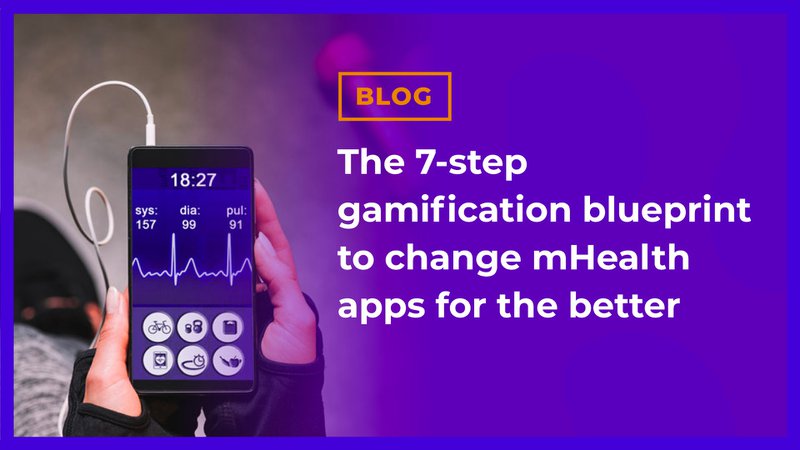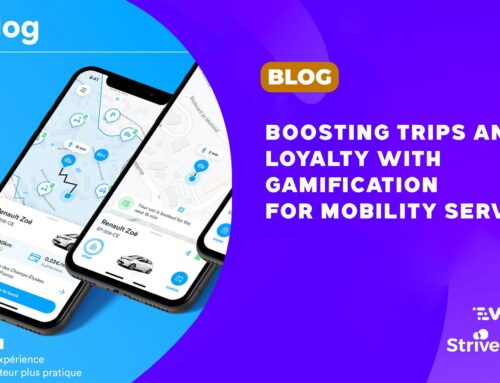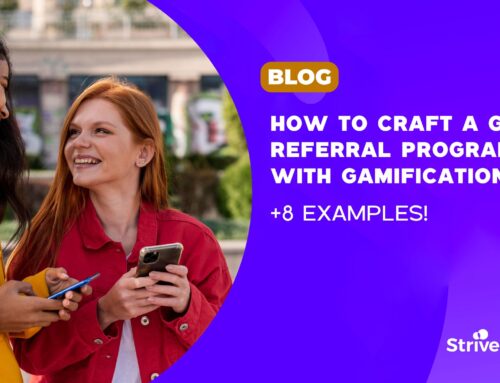The 7-step gamification blueprint to change mHealth apps for the better

The common goal for mHealth apps is to improve their users’ health. However, there are some major challenges in achieving this goal. Some mHealth apps are targetting difficult audiences such as the elderly or children. Others might be troubled with a poor user experience or have a list of boring tasks their user needs to complete before getting any value.
In fact, research shows a whopping 40% of mHealth apps make no revenue at all. So, how can they succeed in retaining users and improving their health, while competing in a market of over 100,000 apps? Gamification for mHealth apps introduces game-like elements into the user experience, to make it fun and motivating for users to reach their goals.
In this article, we will discuss how gamification drives user engagement and how to implement it in your mHealth app!
Here’s what you’ll find out:
- What is gamification?
- Gamification for mHealth apps done right
- How to incorporate gamification for mHealth apps
- The benefits of gamification for mHealth apps
What is gamification?
Gamification is the strategic use of game elements and psychology in a non-game context. Implementing fun in your user experience can motivate users, and eventually drive app engagement and retention.
How does gamification for apps work?
Gamification for apps is mostly recognized through features like badge reward systems, leaderboards, or progress bars. We call these extrinsic motivators. However, true motivation doesn’t come from extrinsic motivation. While they often trigger the initial interactions, research shows it’s not sustainable in the long run.
True motivation comes from within. It’s the underlying emotions behind these features that make a user tick. These are our innate desires for achievement or empowerment. We call these intrinsic motivators. This is what makes the user experience satisfying and worthwhile.
The true power however comes from combining these two. It’s the difference between a gamification strategy that works and one that doesn’t. See how intrinsic and extrinsic motivators go hand-in-hand below:
- Relationships. People are naturally social. We are encouraged by a sense of competition or collaboration between friends and family. To put this into motion you could use features like leaderboards or group challenges.
- Accomplishment. Satisfying the need to achieve creates an intrinsic motivation that makes using your app fun. Try adding features like a leveling or a badge reward system.
- Empowerment. Successful apps empower users with autonomy. Studies show that when mHealth apps allow for customization, users report higher engagement. One simple example is the ability to change the user’s avatar.
- Unpredictability. Humans are naturally curious. Provide your users with challenges and wagers to add depth to your user experience and keep them striving for their goals.
- Constraint. People are highly motivated to avoid negatives outcomes or constraints. A common use case of this is adding a premium version of your app, or leaving certain parts of your app locked.
Looking for more gamification goodness? Check out our ‘What is Gamification’ page!
Gamification for mHealth apps done right
There are many gamification tactics you can use to boost app engagement and user retention. However, it all depends on the user goals and requirements. Let’s see how top mHealth apps like Strava and Milk Man use these features.

Strava was the top health & fitness app of 2020, with yearly downloads jumping 179%. The fitness app helps over 40 million athletes track their runs, cycle rides, and other activities. Most importantly, Strava recognizes the power of motivation.
Runners can turn their local park or street into a racecourse, which the app calls ‘segments’. In doing so they can compete on a leaderboard with others in their area. The genius of their leaderboard is how it thrives on the social and motivational aspect of the user experience. Eventually, making fitness superfun!
On the other end of the spectrum, Milk Man is an emerging app that encourages fathers to learn about the health benefits of breastfeeding. Milk Man drives engagement through points, badges, and social elements like forums and chatrooms. This way they encourage fathers-to-be to engage in discussion.

1 in 3 users cited gamification as the reason for continued app engagement. 72% of Milk Man’s users reported learning new information. The fathers cited personalized notifications as the number one motivating factor.
How to incorporate gamification for mHealth apps
A Brazilian study found that gamification for mHealth apps leads to higher health goal completion. They laid out a 7-step blueprint to help you set up your own gamified user journey:
- Analyze the app’s requirements and key features – find out what actions your users need to take, in order to experience value from your app.
- Identify the target users – Learn more about who your users are, what they like, and what motivates them.
- Pinpoint the interactions between the users and app – identify when a user interacts with your app and think about what the ideal user behavior might look like.
- Learn the pros and cons of other gamification apps with similar interactions – study how competitors leverage gamification and what the positive or negative results are.
- Choose the most suitable gamification strategy – select the strategies that are most likely to work based on the goals you want to achieve and the information you have already gathered.
- Develop the gamification features – Leverage your user data to develop scalable challenge and reward systems to motivate your users.
- Evaluate the gamification features – Measure how the gamification features drive the desired behavior and how you might improve it.
Consider what user data you can leverage to drive the desired user behavior. Essentially, you can gamify any interaction a user has with your platform. Obviously, your strategy will depend on a lot of factors such as who you’re targeting and what you’re trying to achieve.
Setting up a gamification strategy is hard. Let our team of experts help you!
The benefits of gamification in health apps
Gamification drives long-term app engagement. While users might initially be motivated by short-term results, behavioral research suggests that this only goes so far. Once those results have been reached, user motivation can run out. Gamification solves this by providing stimulating positive feelings and an enjoyable user experience.
Gamification makes the user more enjoyable. When 27.8% of users delete within 30 days of downloading a health & fitness application, early app engagement is critical. In fact, gamified onboarding can drive 54% increase in free trial usage. Gamification for mHealth can turn mundane tasks like filling out your profile or your health logs feel like less of a chore.
Gamification reinforces positive behavior change. Simply put, research shows gamification for apps stimulates goal completion. Using motivators like progress bars and achievements, in conjunction with a deeper desire to improve health support behavior change over time.
Want to pimp up your user experience to make it more fun? Check out our app gamification software!
Wrap up
In order for mHealth apps to succeed in their goal of improving user health, they need to overcome the challenge of a boring and abundant user experience. In fact, a major reason for churn in mHealth apps is the lack of user motivation.
To combat this, mHealth apps are increasingly turning to gamification, a strategy used by market leaders like Strava and Milk Man. Gamification for apps leverages game elements to drive action towards your goals. Not only does it make your mHealth app more fun, but it also leads to higher success rates.
Looking to drive long-term engagement and positive behavior change yourself? This might be the right strategy for you!


